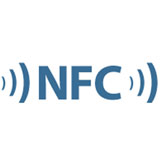 I did a little talk reminiscing on what was hot at this year’s Mobile World Congress, the mobile extravaganza in Barcelona. One of the show’s highlights was BlackBerry’s hyper-connected Porsche (See here for disclaimers) of which you’ll find a video here. Now, that car makes the most of the combination of powerful mobile-connected devices, protocols like NFC or Near-Field Communication and next-generation mobile networks (such as LTE), which deliver data bandwidth by far surpassing our relatively shoddy 3G data through-puts of today.
I did a little talk reminiscing on what was hot at this year’s Mobile World Congress, the mobile extravaganza in Barcelona. One of the show’s highlights was BlackBerry’s hyper-connected Porsche (See here for disclaimers) of which you’ll find a video here. Now, that car makes the most of the combination of powerful mobile-connected devices, protocols like NFC or Near-Field Communication and next-generation mobile networks (such as LTE), which deliver data bandwidth by far surpassing our relatively shoddy 3G data through-puts of today.
I also had a meeting with the good folks from Adidas who used their miCoach in-shoe chip to do some nifty stuff with the data so produced (video here). Adidas takes this one step further in that the performance of your chosen player in an accompanying mobile game. For the time being, this has to make do with a clunky accessory to your otherwise oh so smart phone. But, alas, these days are numbered thanks to the next generation of connectivity coming up right now. Apple’s latest (both phone and tablet) support the next Bluetooth standard, which would be version 4.0 (as opposed to “new”), and that is actually a huge step forward (considering how ickle it all is) and has understandably got its fair share of press recently. Here’s why:
 Bluetooth 4.0 (full specs here), which comes as a “system in a package” has no noticeable impact on battery life of peripherals, which means you could effectively run your external keyboard or, perhaps more importantly to some, heart-rate monitor, on the same battery charge for the lifetime of the device. Oh, and it always handles NFC on top. The new standard handles up to 26 Mbps data throughput (compared to 2 Mbps for the older standards) although this is lower in the above-hailed low-energy mode.
Bluetooth 4.0 (full specs here), which comes as a “system in a package” has no noticeable impact on battery life of peripherals, which means you could effectively run your external keyboard or, perhaps more importantly to some, heart-rate monitor, on the same battery charge for the lifetime of the device. Oh, and it always handles NFC on top. The new standard handles up to 26 Mbps data throughput (compared to 2 Mbps for the older standards) although this is lower in the above-hailed low-energy mode.
All this put together creates potential for solutions that may not make for head-turning cool gadgets at tech conferences but they are things my mom might use: Just pair your phone with WiFi by touching in using an NFC chip (she could not find the settings for this if her life depended on it), use it for any type of fitness-related stuff, hook up any type of wireless device with the settings of, say, your car (probably with seamless handover of content, preferences, playlists, etc, too). Last but not least, the full range of healthcare all of sudden becomes a whole lot less geeky and a whole lot more accessible to normal people (which often was the problem with “modern” stuff: they worked well if you had an engineering degree or an unhealthy appetite for anything that smelled remotely geeky but was utterly unusable for anyone else). And for the geeks of you, there will always be the under-counter coffee-making faucet that you could then arguably also power using the hyper-connectedness of the brave new world.
So, interconnectedness is just about to enter the mainstream and that, dear friends, was the news of the week for me in Barcelona.

